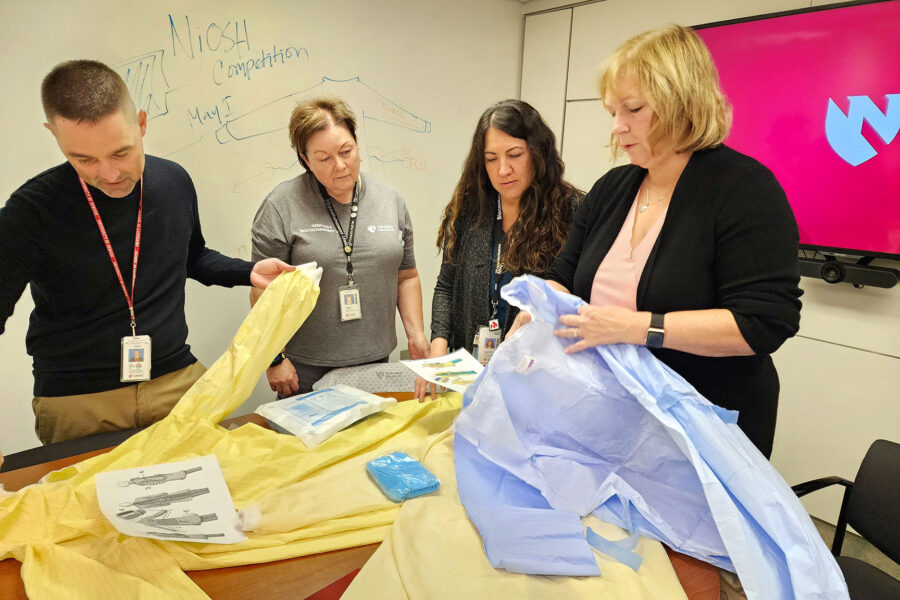Thang Nguyen, PhD, assistant professor of emergency medicine, reached into the isolation bag to grab a personal protective equipment gown, holding it up to check its size.
“Sometimes I put it on, and it’s a little too tight or too loose,” he said.
This daily uncertainty was the inspiration behind a concept that Dr. Nguyen and med center colleagues helped develop for the National Institute for Occupational Safety and Health (NIOSH) Protective Clothing Challenge competition. The competition challenged participants to develop a concept that addressed poor fit in U.S. workers’ protective clothing.
The Nebraska Biocontainment Unit and UNMC Department of Emergency Medicine teamed on the national challenge.
The result: A garment called the Omni-Fit PPE Gown and a first-place finish in the nationwide competition.
Dr. Nguyen, who was the engineer for the project, said the med center collaborators faced a similar problem.
“We wear PPE gowns for long durations,” he said. “If it’s uncomfortable or ill-fitting, it hinders our ability to care for patients.”
Team lead Shahnaz Benner, clinical program coordinator with the biocontainment unit and quarantine unit, spoke of her own experience as an example.
“I was pregnant at the start of the pandemic and had to constantly wear PPE, which wasn’t fun,” said Benner, who also is a registered nurse in the emergency department at Nebraska Medicine. “Our project team wanted to create something that could conform to various body types.”
The solution they came up with was the Omni-Fit PPE Gown.
Its primary component is an accordion waistband that can expand or shrink to accommodate an individual’s waist size. It also features a cooling material that addresses another problem familiar to medical professionals after more than two years of COVID-19.
“It can get extremely hot,” Dr. Nguyen said. “Sometimes you start sweating, then your glasses fog up if you’re wearing a hood, and that hinders your ability to see. It just cascades, and a lot of these problems start compounding.”
The cooling material, embedded in the gown’s sleeves, activates when you sweat. Dr. Nguyen equated it to putting a wet sports towel on the back of an athlete’s neck.
The visual contamination indicator provides another potentially life-saving component. It works the way chemicals in a baby diaper do. The moment moisture hits the Omni-Fit gown, the indicator changes colors, giving the individual a visual warning that they may have been contaminated.
Finally, perforated sections were incorporated in the lower half of the gown. Often, a shorter individual may find themselves in a standard gown that is too long. The perforated sections in the Omni-Fit can remain intact or be ripped off, like a paper towel, to accommodate a person’s height without impairing the gown’s effectiveness.
The med center team developed this concept in a few weeks, approaching the challenge, Dr. Nguyen said, with a commonsense mentality.
The resulting first-place win – over more than 35 competitors – took the team by surprise.
“We were shocked,” Dr. Nguyen said.
The team was awarded $25,000. The money will be used to develop a working prototype, with the goal of bringing the Omni-Fit PPE Gown to market.
Benner said the win was a huge achievement and a testament to how well the emergency medicine department and biocontainment unit worked together.
“At the end of the day, we both have the same endgame,” she said. “We strive to improve health care outcomes and keep people safe.”

Congrats! This is outstanding work.
Great work!